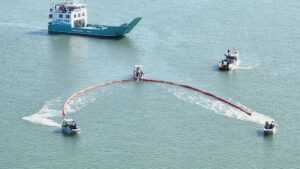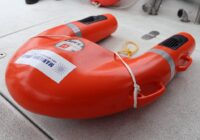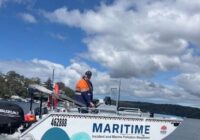Maritime Safety Queensland (MSQ) convened the state’s annual multi-agency pollution response exercise for the first time since the event was postponed in 2020–21 due to COVID-19.

As Maritime Safety Queensland is the lead agency for responding to major marine incidents in Queensland under Australia’s National Plan for Maritime Environmental Emergencies, it was important they conduct the most realistic ‘dry run’ possible.
From 21 to 23 June 2022, Gladstone became the setting for Exercise CABIN—a real-time response exercise involving around 150 representatives from MSQ, the Department of Environment and Science (Queensland National Parks and Wildlife Service), Great Barrier Reef Marine Park Authority, Australian Maritime Safety Authority, Gladstone Ports Corporation, Gladstone Regional Council, traditional landowners and others.
The purpose of exercises such as Exercise CABIN is to test their incident response systems and personnel to the point where things go wrong; because it’s better to know about where the problems may lie before they have to respond to a real incident.
Participants were presented with a scenario of a tug colliding with a bulk carrier, puncturing the bulker’s hull and releasing about 30 tonnes of heavy fuel oil into the Port of Gladstone’s waters.
From there, it was a test of how the teams within the response structure reacted when an Incident Control Centre (ICC) and Incident Management Team (IMT) under the leadership of the Incident Controller—Gladstone Regional Harbour Master John Fallon—were stood up.
Maritime Safety Queensland made sure all the required functional units for an incident of this type were involved—planning, intelligence, public information, operations, investigation, logistics and finance.
Some of the activities tested as the response unfolded were:
- modelling of tides and currents to predict the movement of the oil slick
- deployment of pollution response vessels and equipment including boom
- ‘closure’ of areas of the port, including the Gladstone Marina, to maritime traffic to enable responders to contain the spill
- activation of wildlife care facilities to treat ‘oiled’ seabirds and turtles
- ‘purchase’ of pollution clean-up equipment
- mock press conferences and public meetings to provide updates on the situation
- despatch of drones and underwater cameras to film and transmit real-time footage back to the IMT established at CQ University’s Coastal Marine Ecosystems Research Centre.
The exercise trialled the use of the Guardian Incident Management System. Guardian acted as the repository for all information, tasking and decision-making about the incident—the first time it had been used by MSQ in an exercise of this kind.
Changing circumstances were also ‘injected’ into the exercise to add layers of complexity to the incident and test the agility of the functional teams.
While Guardian was something new for everyone, the use of the system was a success, with lots of positive feedback and discussion about how Maritime Safety Queensland could use it in circumstances such as severe weather events.
The drone footage also added impressively to their response arsenal and the opportunity to work with personnel from other agencies and hone those working relationships is a benefit that should not be underestimated.
Maritime Safety Queensland said they are pleased to say that, overall, Exercise CABIN showed their arrangements to be in pretty good shape as they continue to work for the best but prepare for the worst.











